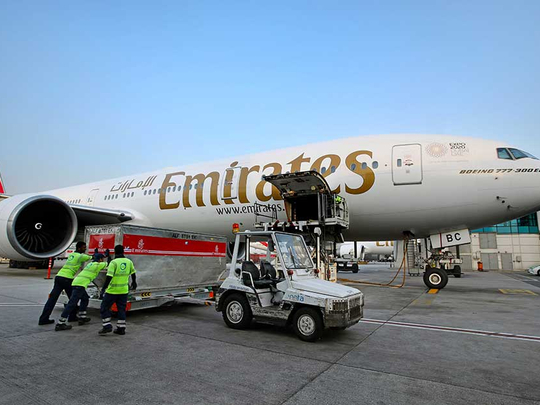
Abu Dhabi: Cargo demand from the Middle East was down 25 per cent during May, but that's still an improvement on the 36 per cent decline in April, new data from an industry grouping show. It provides testimony to demand improving since lockdowns eased.
Yet, traffic on all key routes for Middle Eastern carriers is still low, with international capacity declining by 24.4 per cent compared to May last year. Globally, cargo demand and capacity was down 20.3- and 34.7 per cent, respectively. But the figures still represent improvements on April.
Interestingly, global capacity remains unable to meet demand that is there, due to the loss of belly cargo operations on passenger aircraft. IATA (International Air Transport Association) reckons belly capacity fell 66.4 per cent during May, but up from the 75.1 per cent decline in April.
“The gap between demand and capacity shows the challenge in finding the space ob aircraft still flying to get goods to market,” said Alexandre de Juniac, IATA’s director-general and CEO. “For all that, prospects for air cargo remain stronger than for the passenger business but the future is very uncertain.
“Economic activity is picking up from April lows as some economies unlock. But predicting the length and depth of the recession remains difficult.”
The biggest drop in cargo demand came from European carriers, with international cargo volumes falling by 29.9 per cent. International capacity was also down by 40.1 per cent, with limited manufacturing output and lockdowns taking their toll.








